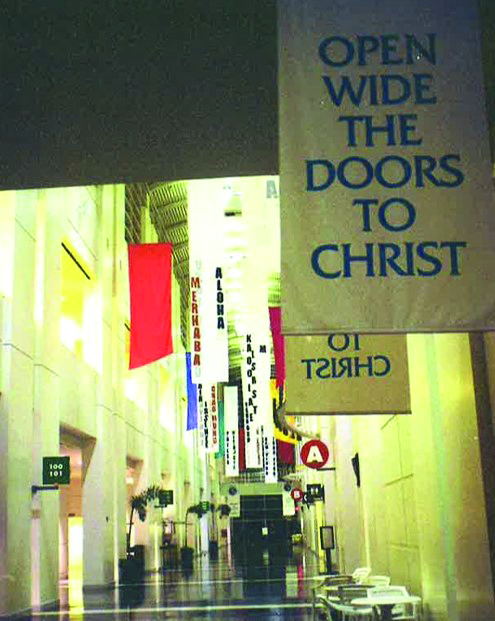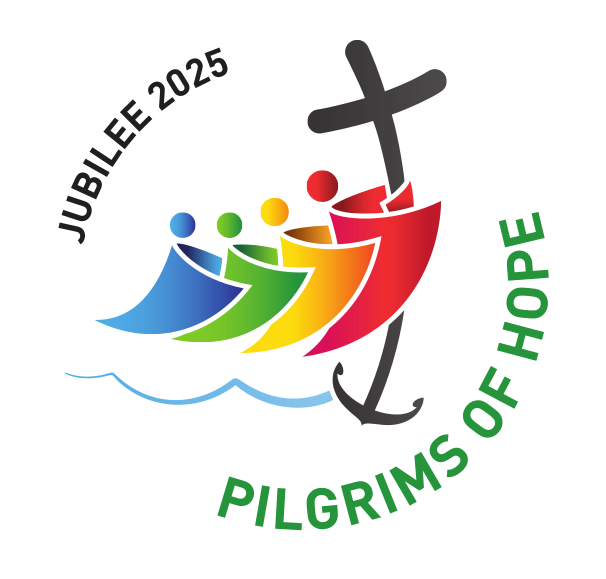By Arlene Gutierrez
As we open the doors to the Pilgrims of Hope for 2025, we look back at Jubilees from years past. Since the inception of our diocese, we have experienced two Jubilees; in 2000, we had our most recent Ordinary Jubilee with the theme, “Opening Wide the Doors to Christ.” In 2015, we joined the rest of the Universal Church in an Extraordinary Jubilee, the “The Year of Mercy.” Our diocese has been active in these previous jubilees as both encompassed themes that rang in the hearts of the faithful entering the new millennium in 2000. With Pope John Paul II making a public request for us to celebrate the mercy of God and the forgiveness of sins, we opened our hearts to Christ so we would be open to Christ’s mercy.
In 2000, our focus was on deepening our spiritual lives both individually and collectively as a community of believers in Jesus Christ. By opening our hearts and doors to Christ, we aimed to become a guiding light for those in need, whether within our families, neighborhoods, or society at large. That Jubilee marked a pivotal moment as we welcomed the millennium amid challenges such as war, famine, and a prevailing sense of uncertainty about the future. The theme served as an invitation for the faithful to reflect on their lives and consider how they might evangelize, reconcile, and celebrate their relationship with Christ within our universal church and humanity.
Within our diocese, the call to “Open the Door Wide to Christ” translated into a commitment to our baptismal promise of evangelization and service to those in need. Six key characteristics characterized the 2000 jubilee to ensure an active engagement in our diocese. We established perpetual adoration across all six vicariates, facilitated moments of reconciliation in parishes, and designated Holy Doors at Our Lady of the Rosary Cathedral, along with a parish in each vicariate. Each participating church chose a door for this celebration. Furthermore, our diocese took a stand for victims of suffering and neglect, organizing marches inspired by the Stations of the Cross, and hosted the inaugural Encuentro 2000, fostering a mutual understanding within our culturally and ethnically diverse local Church. This spirit of encounter continues to inform various parish ministries and the current V Encuentro initiative. Lastly, we invited our faithful to make spiritual or physical journeys. These characteristics aimed to nurture the faithful so they could learn to open their hearts to receive God’s message for the 2000 Jubilee.
As part of our call to pilgrimage throughout our diocese, we asked the Catholic faithful to visit parishes of historical significance, hold space for those plagued by injustice, and provide moments of respite for their souls. We encouraged our pilgrims to travel through Riverside and San Bernardino Counties to learn about the rich history of the parish pilgrimage sites. A travel guide was made for those who were interested in this historical journey. A Jubilee Justice convention was held at the University of California, Los Angeles for the Ministry of Faith and Justice to discuss key topics in the Diocese. The last pilgrimage we asked people to consider was to our retreat centers, places meant help enrich and heal the hearts and souls of those in our diocese who need it the most.
The six characteristics made for the 2000 Jubilee helped the people learn to open themselves up to Christ so that they would be transformed at the end of their journey. “In order to grow, we must experience this life that God has left for us to enjoy and learn to put our faith into action by helping our brothers and sisters in need,” read one of the characteristics. “By the conclusion of this Jubilee, we hope to emerge as transformed faithful, embodying the continuous cycle of growth and change that God invites us to undertake.”
From that call to open our hearts to Christ, we now, in this 2025 Jubilee, identify as Pilgrims of Hope. What does this theme signify for us? Are we indeed pilgrims of hope for ourselves, our neighbors, friends, and family? We are called to extend our hands in unity, becoming pilgrims of hope in a world that urges us to reignite our baptismal promise and cultivate a deeper connection to Christ by embodying love and kindness, serving as a beacon of light for those in need.
The 2000 Jubilee was a call for us to open our hearts to Christ and to one another. To allow Christ’s love to flow within us. This year, our task is to be Pilgrims of Hope together. In the Pilgrims of Hope logo for 2025, each pilgrim is holding onto one another. This image of the pilgrims signifies that this journey is not one in which we travel alone but with each other, our community, our families, our friends, and those on the outskirts of our community who need a little light in their lives. Let this be the Jubilee that you actively journey through your faith; even if this is your first Jubilee, do not let it pass you by. May we all continue this journey in our faith together as one.
Arlene Gutierrez is the Director of the Diocesan Office of Archives.





